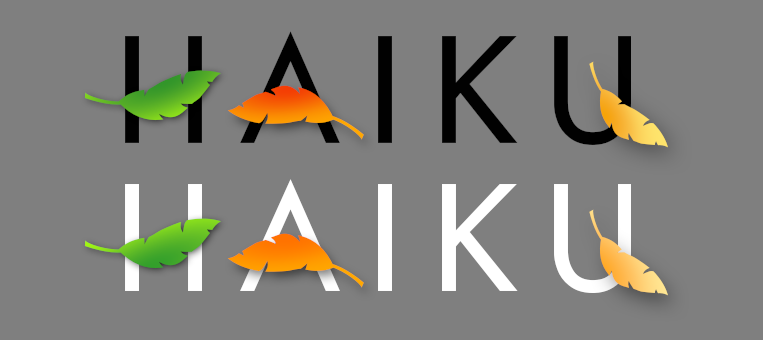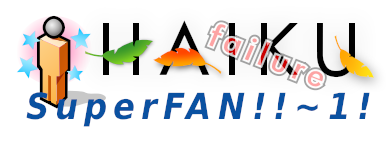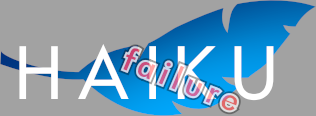Logo Design
The HAIKU logo is one of the trademarks owned by Haiku, Inc.
The original HAIKU logo was created by Stuart McCoy (stubear). The current version, which includes different leaf graphics, gradients and shadows for the leaves is by Stephan Aßmus (stippi).
- In March of 2011, the HAIKU logo first became a registered mark at the U.S. Patent and Trademark Office.
With respect to graphical modifications, the HAIKU logo should generally be viewed as read-only.
Glyphs
The HAIKU logo currently uses customized shapes based on the Futura Medium font, also called just regular Futura. The glyphs are slightly modified (mostly to align with pixels boundaries). While Futura LT Medium.ttf and Futura2-Normal.ttf are close approximations, they should not be used for re-creating the wordmark; instead the actual logos should be used.
Colors
The glyphs in “HAIKU” (the “wordmark”) shall be either white (#FFF) or black (#000). Logos with a white wordmark are used on dark backgrounds and conversely, black wordmarks are for light colored backgrounds. See below for the subtle differences in the coloring of the leaves.
Leaf Gradients
If you look closely at the leaves in the various HAIKU logos, you may notice subtle differences that coorelate to the color of the wordmark. This provides better contrast on dark and light colored backgrounds. The shadow of the leaf will make sure that there is contrast at the bottom, while the darker gradient at the top gives more contrast against the light background. Here are the two logos on a neutral grey (RGB: 162,162,162), to help showcase the differences in the leaves.

Incorrect Logo Usage
The following sections show several incorrect uses of the logo. The HAIKU logo should remain unaltered and unadjusted.
Wrong color leaves

Wrong graphic in place of leaves

Wrong color wordmark

Wrong font type

Additional elements


Similar and confusing




Suggested Software
The HAIKU logo and related artwork is best viewed with WonderBrush, which is freely provided with Haiku®. WonderBrush can be thought of as a pixel-renderer as opposed to a pixel editor. This allows the images to be resized in a high quality manner, similar to vector images.
While WonderBrush is capable of exporting images to the SVG format, several subtle but key aspects of the HAIKU logo will not be preserved. Thus, it is best to export the WonderBrush files directly to PNG or a similar raw pixel format.